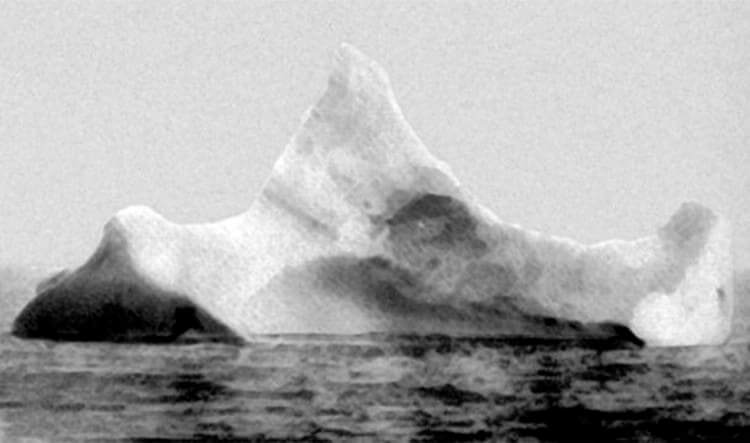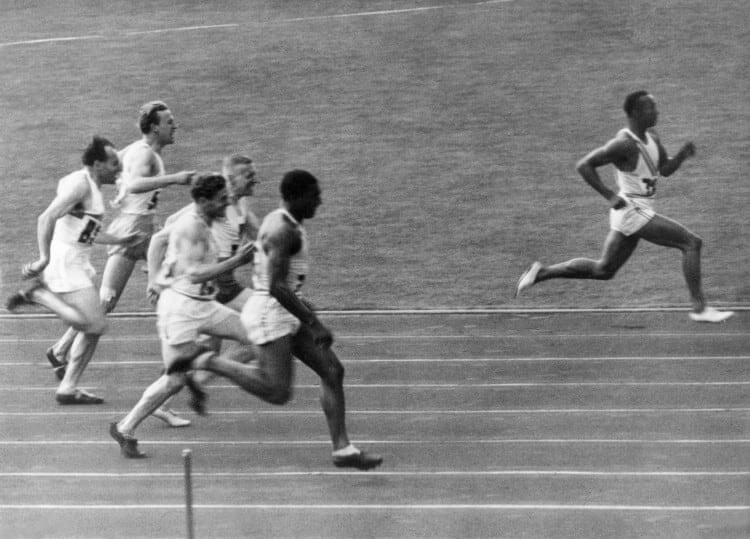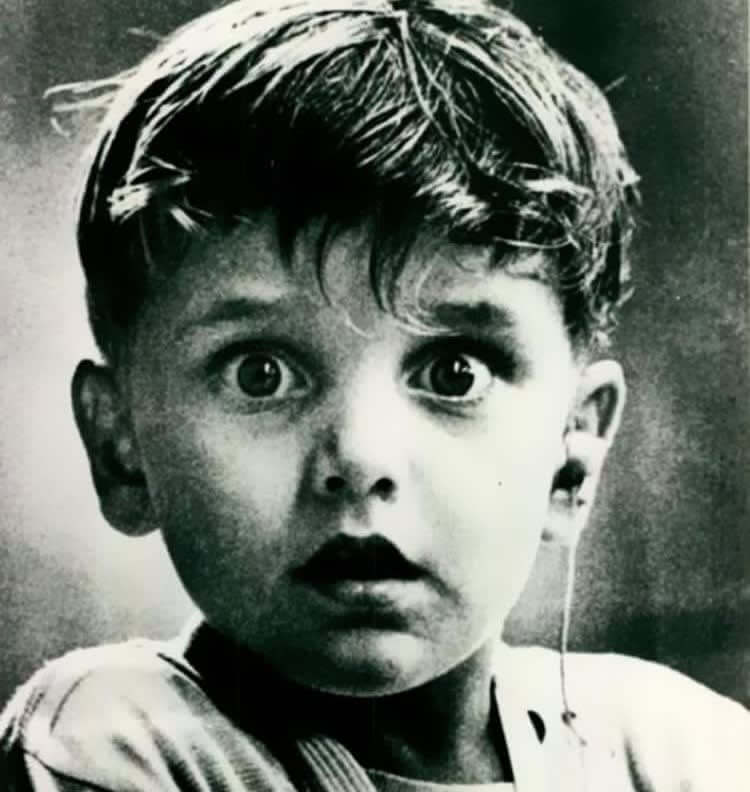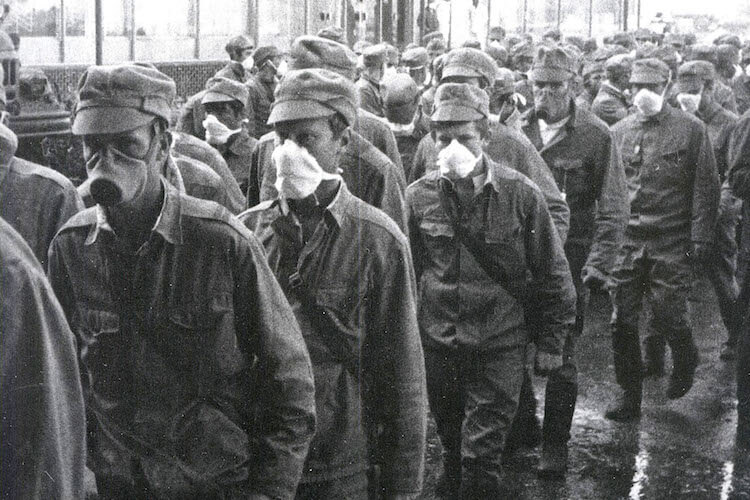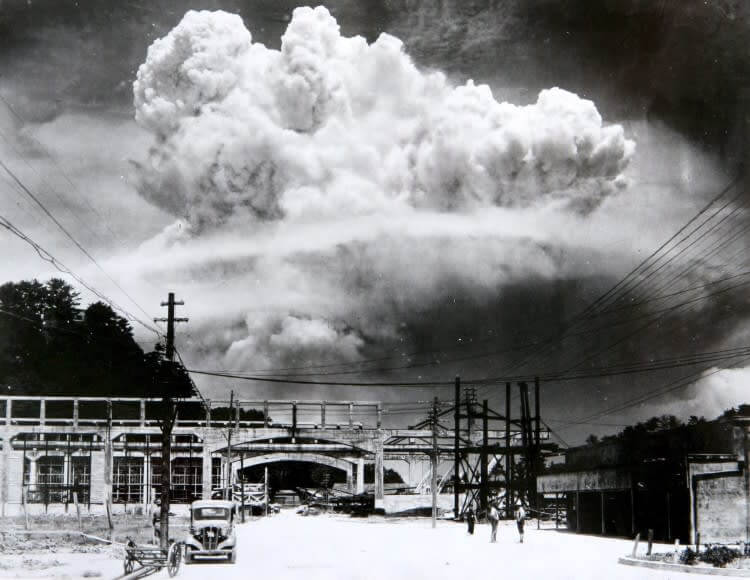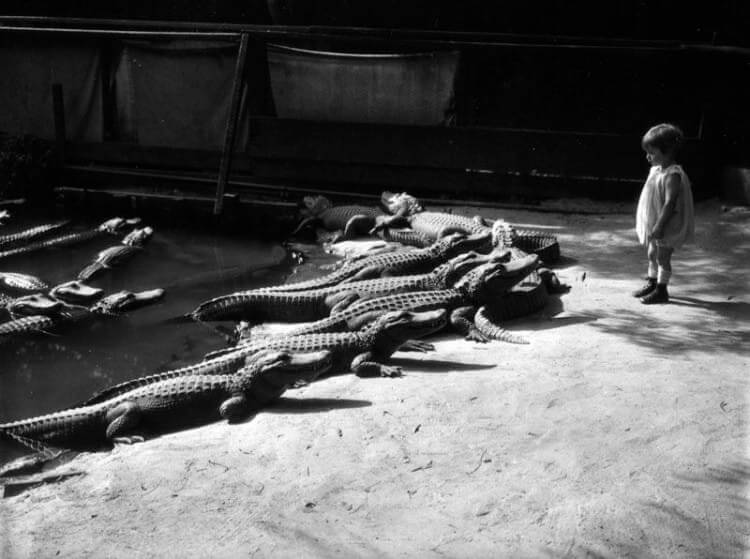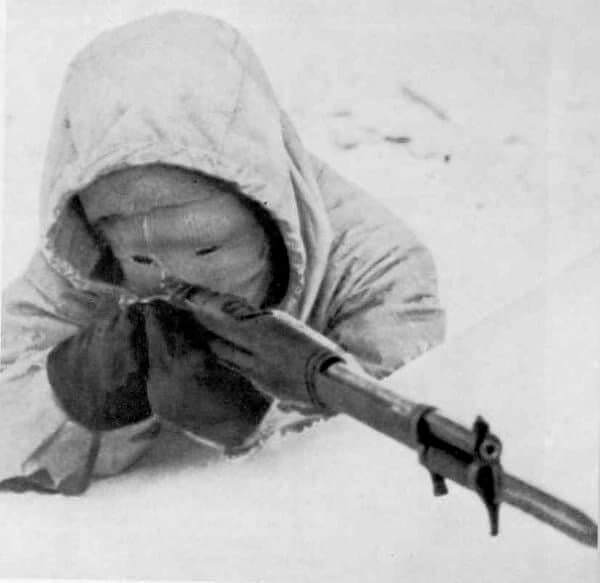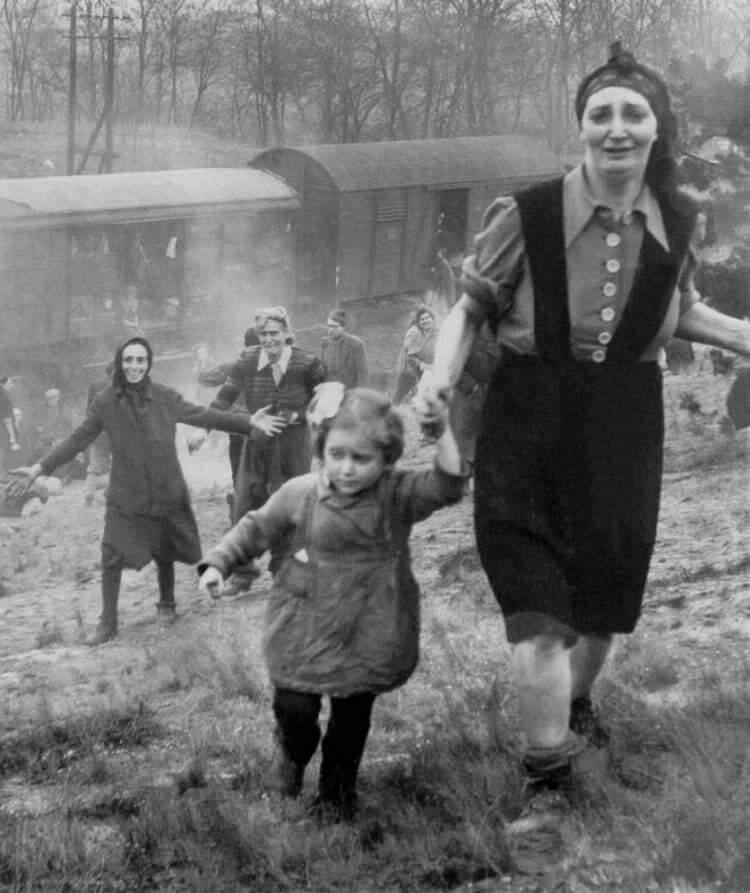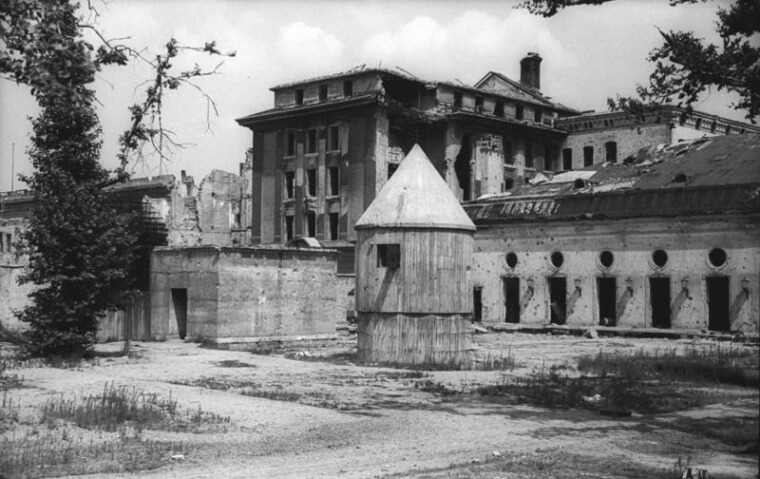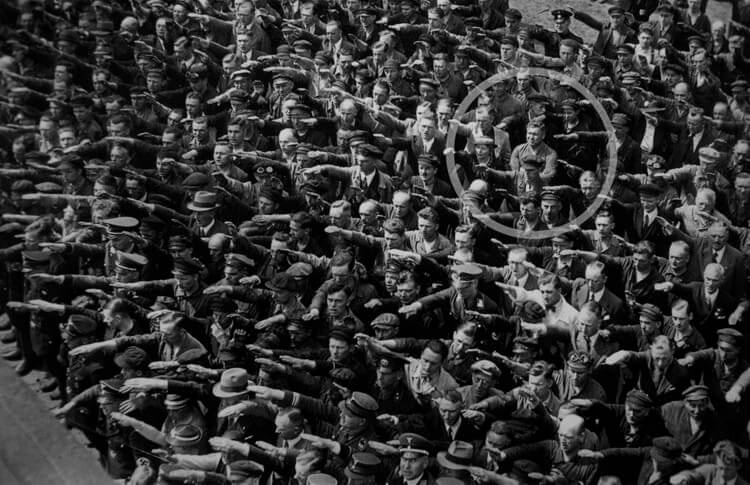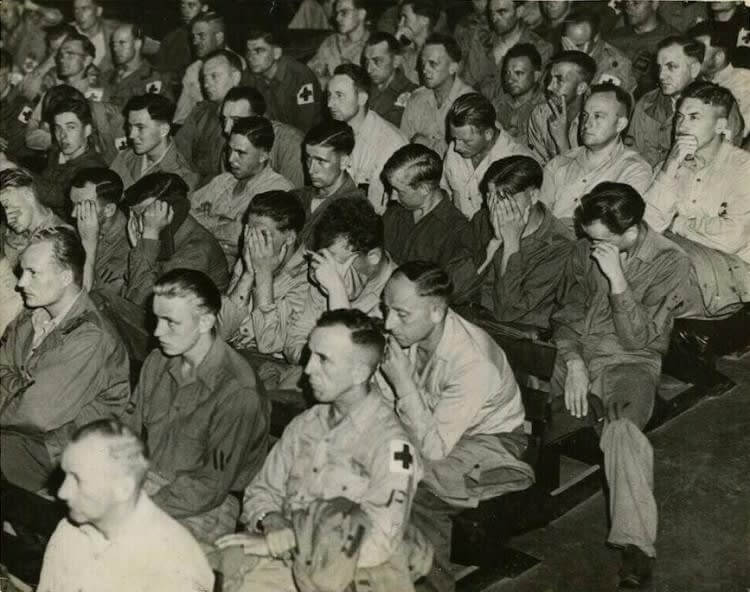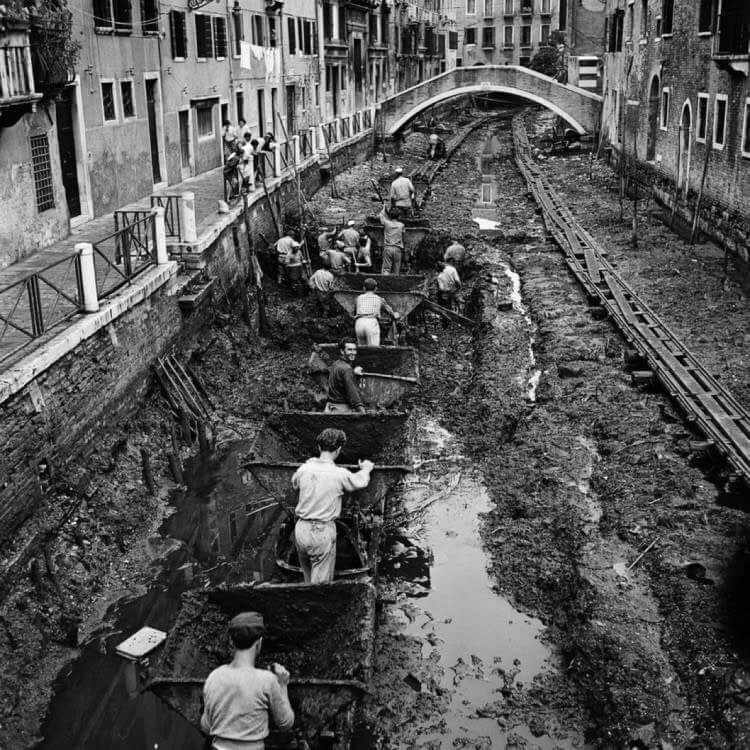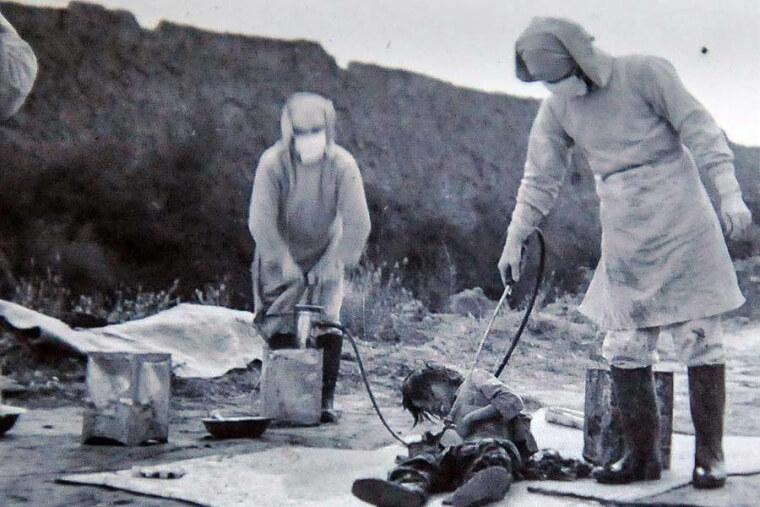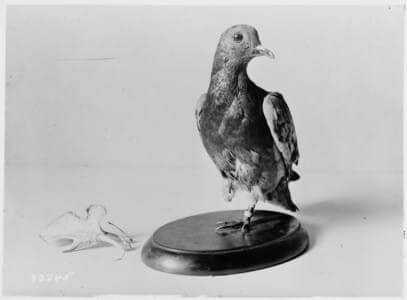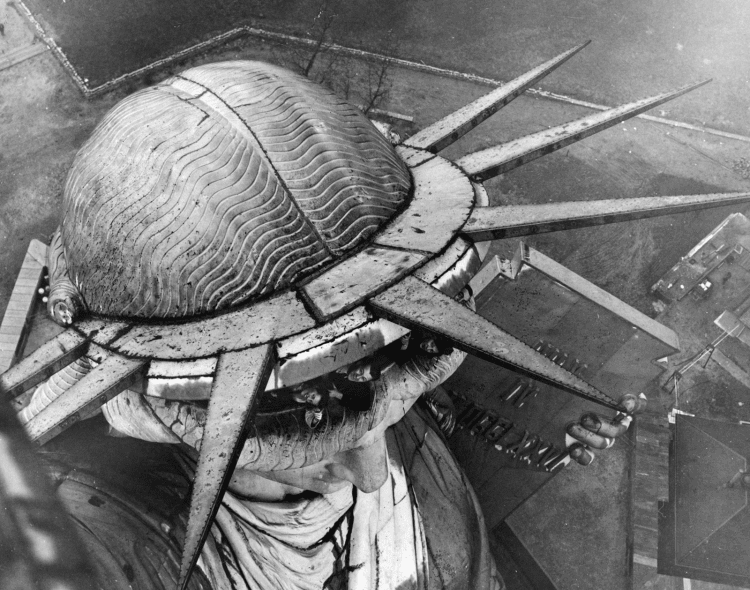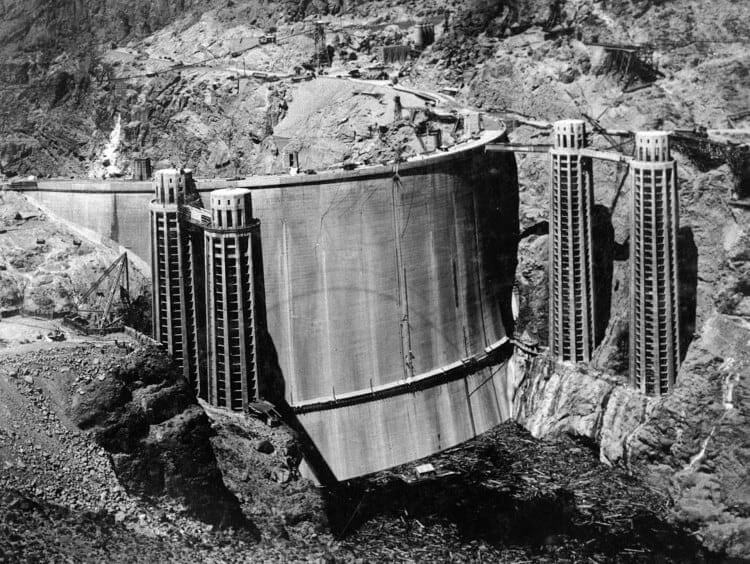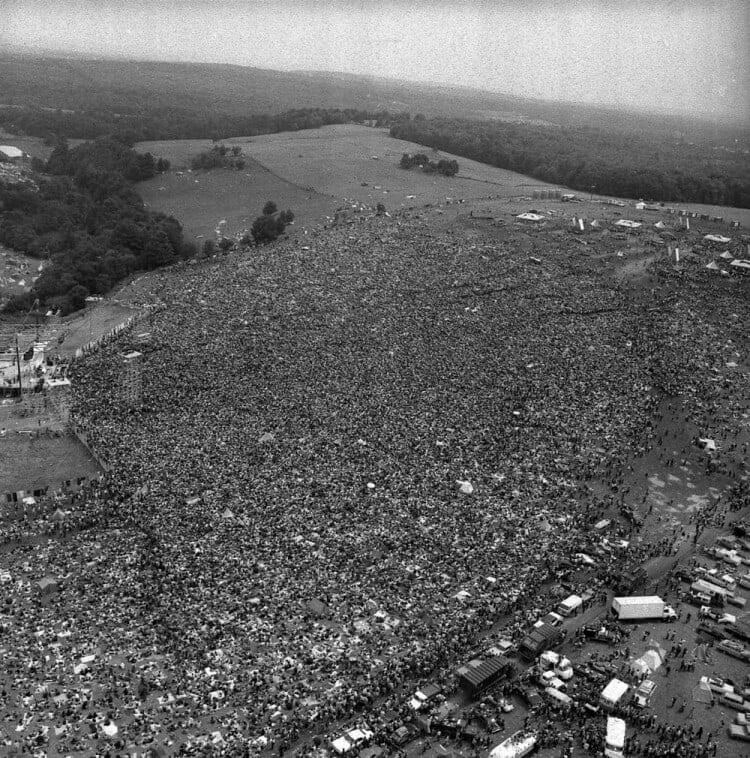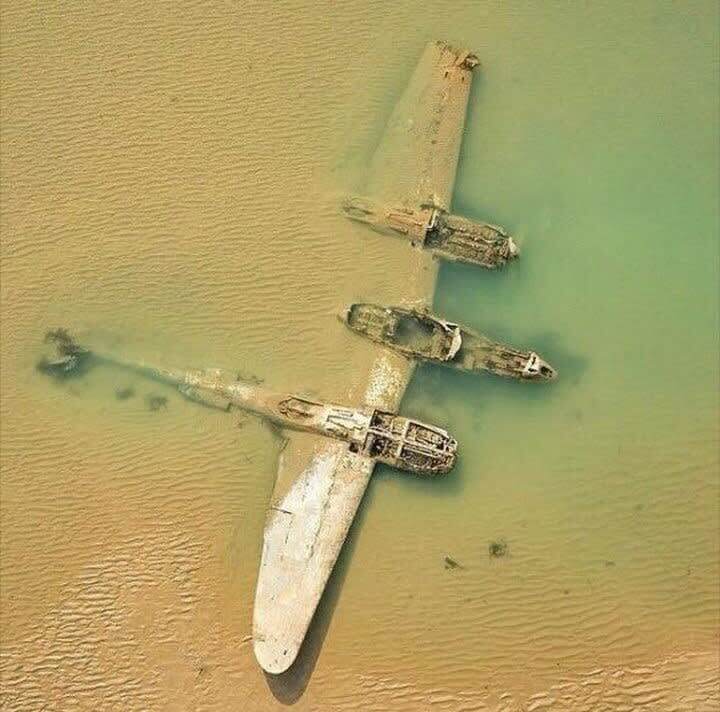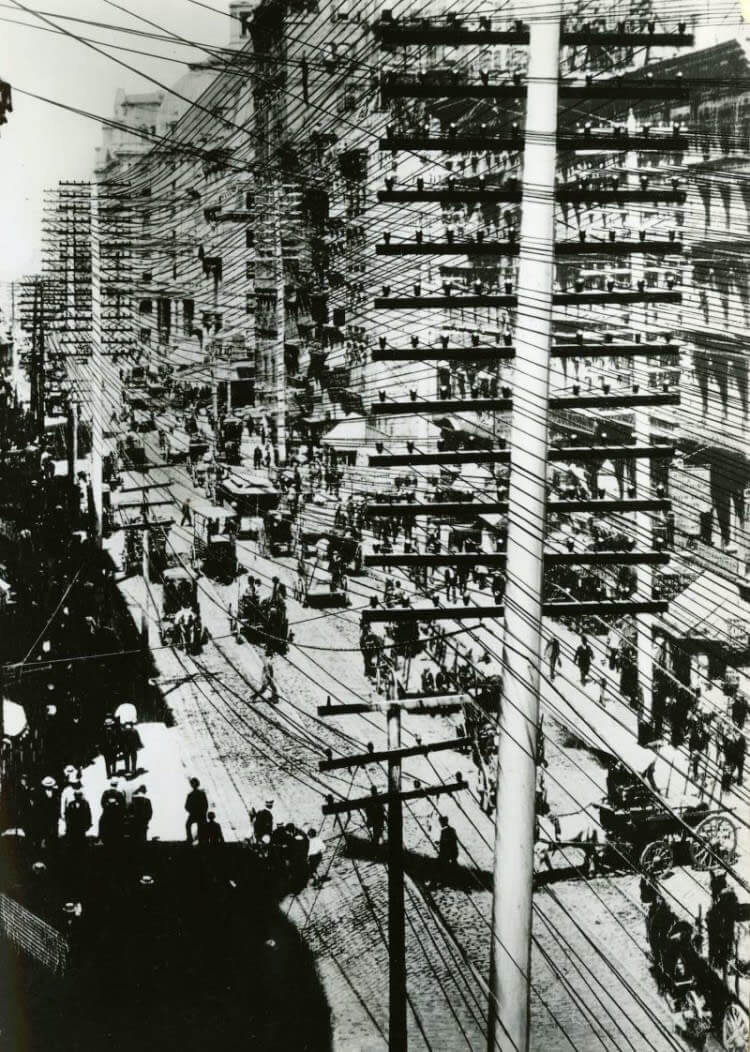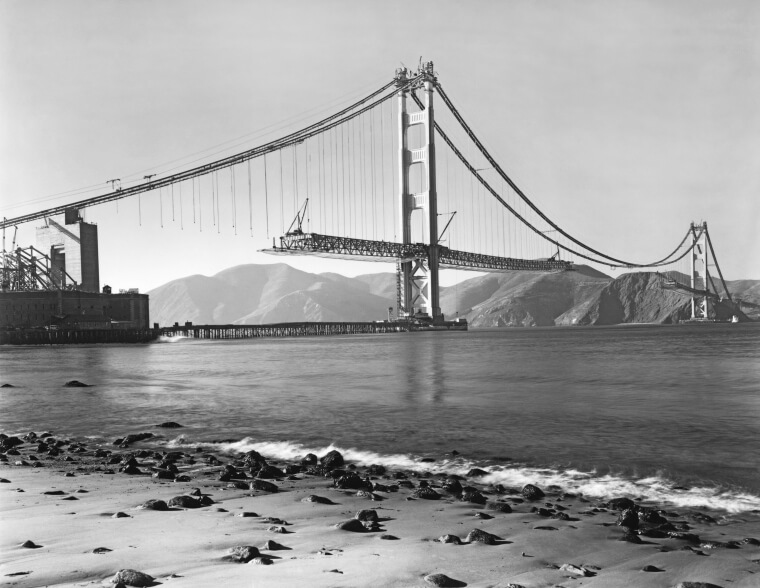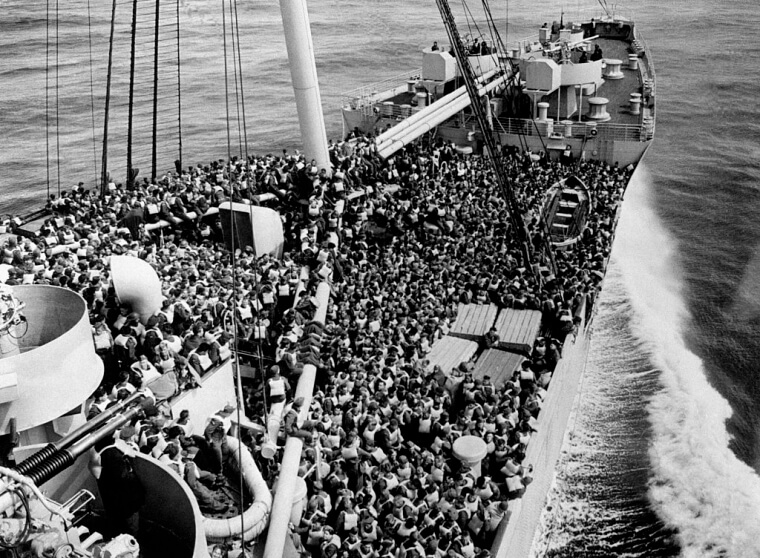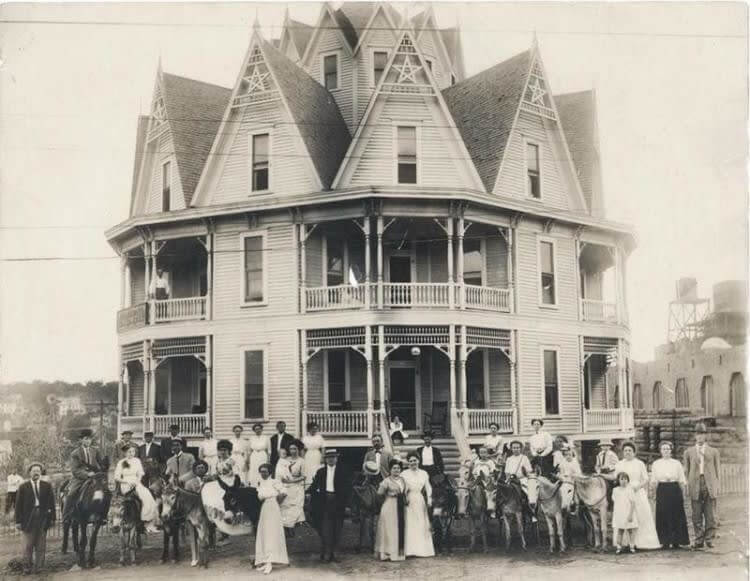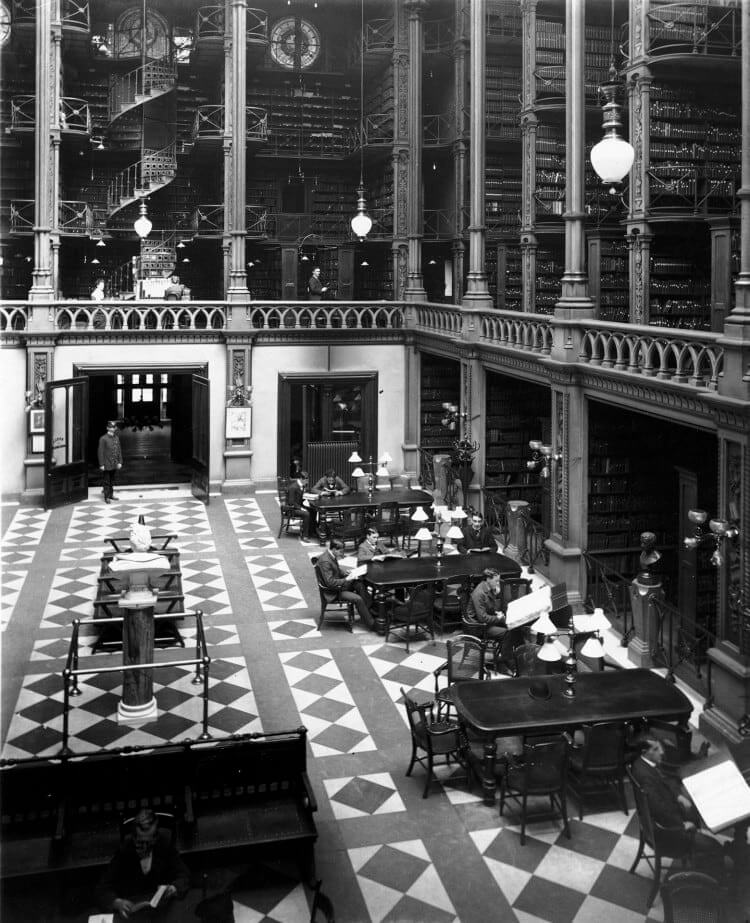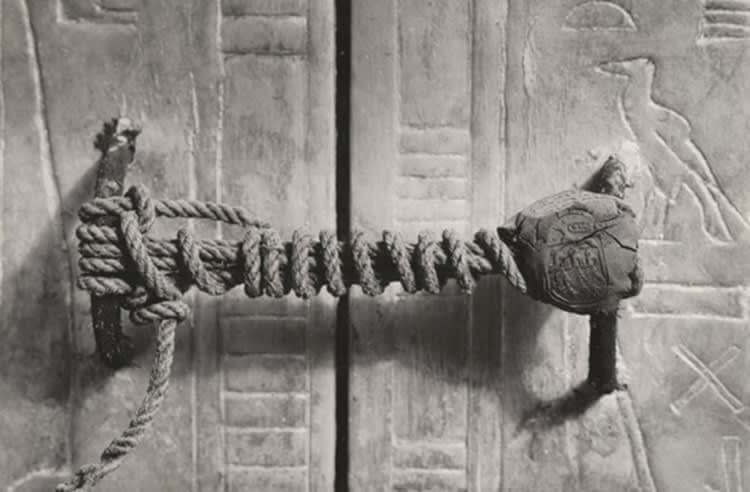This article was originally published on 24/7Mirror
1. Traffic Jam After the Fall of the Berlin Wall, 1989
The Berlin Wall was a massive concrete barrier that served not only as a physical barrier, but an ideological barrier as well, and it became a symbol of the Cold War. Constructed by the German Democratic Republic, the wall separated West Berlin from East Berlin and Eastern Germany as a whole for almost thirty years.
The GDR referred to the Berlin Wall as the "Anti-Fascist Protection Rampart," while West Berlin's authorities often referred to it as the "Wall of Shame." Officially, the wall was intended to protect the East from Western fascist and capitalist elements, but functionally, the wall prevented East German emigration to the West, which had been rampant before its construction. While over 100,000 endeavored to escape, only approximately 5,000 succeeded, and more than a hundred were killed during the attempt.
2. The 100,000-year-old Iceberg that Likely Sunk the RMS Titanic, 1912
On the night of April 14th, 1912, the British ocean liner known as the "Unsinkable" RMS Titanic struck a massive iceberg and sunk into the North Atlantic several hours later, killing more than 1,500 people. The following morning, a German liner called the SMS Prinz Adalbert was passing by the site with no knowledge of what had occurred just hours before.
It was then that her crew discovered a massive, solitary iceberg. M. Linoenewald, the chief steward, noted some sharp points and an odd streak of red paint along its side and photographed it. He wrote "the Titanic disaster was not yet known by us. On one side red paint was plainly visible, which has the appearance of having been made by the scraping of a vessel on the iceberg." It is still presumed to be the fateful iceberg that sunk the Unsinkable Titanic on her maiden voyage.
3. Jesse Owens Becomes a Track Legend, Winning 4 Olympic Gold Medals... in Nazi Germany, 1936
Three years before the beginning of WWII, the 1936 Olympic Games were hosted by Berlin. Adolph Hitler was already effectively the dictator of Germany and was among the attendees -- eager to prove his ideas of Aryan dominance and superiority to the world.
Owens, on the other hand, was eager to prove he was an absolute monster in track sports.
Jesse Owens took the gold medals in the 100m and 200m Sprints as well the those of Long Jump and 4x100m Relay categories, becoming the greatest track athlete the United States had ever seen until that point. Despite destroying Hitler's aspirations of Aryan dominated Olympics, Owens confirmed that he did receive a wave from Germany's future genocidal dictator.
4. Deaf Boy Hears Sound for the First Time, 1974
For most of human history, there was understandably little that could be done for deafness. The technology simply didn't exist until the 20th century, and even then wasn't especially impressive. The transistor hearing aid had been in development since the 1950s, and although it would later be replaced by the more familiar digital hearing aids, it was the best commonly available technology at the time. Deaf until the point this photo was taken, a young Harold Whittles experiences sound for the first time in his life.
When his doctor activated the strange device and inserted it into Harold's ear, the first burst of sound shot through its wires. Also present was photographer Jack Bradley, who snapped this shot, effectively immortalizing the expression of awe and wonder on the child's face as an entirely new form of perception was unlocked.
5. World Trade Center Photo Backdrop, 2001
This September 11th shot draws an extreme contrast between the casual posture of the model and the utter chaos unfolding behind her. Most Americans remember where they were when the news broke as clearly as they see this photo. Nearly 3,000 people were killed, and over 6,000 others were injured. In the aftermath of the destruction, countries around the world launched military interventions against Islamic terrorism and insurgency which have raged across much of the Middle East for almost twenty years with few signs of resolution.
The World Trade Center, however, has since been rebuilt, currently featuring four of a potential six skyscrapers. It includes both a museum and a memorial to the victims, as well as a transportation hub, an elevated park, and the St. Nicholas Greek Orthodox Church. The complex's main building, the One World Trade Center, stands at 104 stories as the tallest structure in the Western Hemisphere.
6. "Laika," the First Animal Sent into Orbit, 1957
The tragic story of Laika began on the streets of Soviet Moscow in 1954. Eager to test out the viability of the new Sputnik 2 spacecraft after the success of Sputnik 1, researchers needed a live occupant. Taking to the streets looking for stray dogs (who were considered more hardy and durable) and they found a young Laika female of approximately 3 years old. She was chosen for her small size as well as her bright fur. Some of the names given to her by Soviet personnel included Kudryavka (Little Curly One), Zhuchka (Little Bug), and Limonchik (Little Lemon). Preparations were completed rapidly, and Laika was launched into space aboard Sputnik 2 on November 3rd, 1957. Admittedly, not much was known about the effects of spaceflight on living creatures at the time, but Laika's survival was never expected.
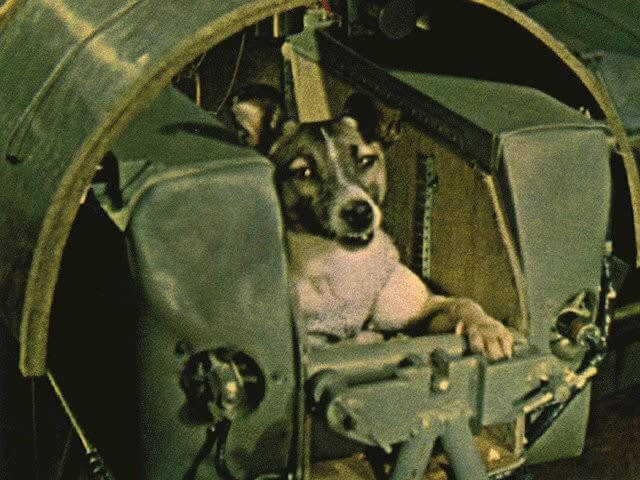
Although the Soviet government had always maintained that she survived for days, it was not until the collapse of the USSR that criticisms erupted and the truth came to light. Terrified and alone, she was cooked alive by the heat of the sun's rays within several hours. Soviet Air Force officer and former director of the Moscow Institute for Biomedical Problems, Lt. General Oleg Gazenko, expressed great regret over the incident. In 1998 he stated: "the more time passes, the more I'm sorry about it. We shouldn't have done it." While future missions carrying dogs were designed to be recovered, Laika would not be the last dog to die in Soviet space missions. Today, she remains both a cultural icon and a source of deep remorse across Russia.
7. Men Coming To Clean Up Chernobyl 1986
The Chernobyl disaster was a catastrophic nuclear accident that occurred on April 26th, 1986, at reactor #4 in Pripyat, Ukraine. During test preparation to address a potential hazard regarding backup power to the reactor's coolant system, the reactor's power dropped to nearly zero, leaving it in a critical state. Unaware of the risks, operators proceeded with the test -- and due to a combination of design and construction flaws, the reactor suffered an uncontrolled nuclear chain reaction.
A massive burst of energy was released instantaneously, vaporizing the coolant and fracturing the reactor core, causing a devastating explosion of steam and radioactive fire. Special chemical protection units called liquidators were immediately called in to address the devastation at the reactor site. As no adequate protection existed for such intense radiation exposure, operatives were forced to fortify their own gear with lead sheets. While the liquidators significantly limited damage to the area, it remains heavily irradiated and is still designated an Exclusion Zone. The Chernobyl disaster is one of only two events of such magnitude, the other being the Fukushima accident.
8. The Atomic Bomb Destroying Nagasaki, 1945
In the final years of the Second World War, it became clear to the United States that a victory over Imperial Japan would require a protracted and costly mainland invasion of an enemy who had already proven brutal, tenacious, and uncompromising. Although most of Japan's war crimes and atrocities such as Unit 731 were still unknown to the allies, Americans had already lost half a million troops against the Japanese and were keen to test out something new -- the atomic bomb.
The Manhattan Project had conceived two types of atomic bombs, and on August 6th and 9th, the infamous Little Boy and Fat Man bombs were dropped on Hiroshima and Nagasaki respectively. Massive devastation ensued, killing up to 120,000 people. As the USSR's recent conquest of Berlin left Hitler dead and Nazi Germany defeated, Imperial Japan was effectively alone in the war. Six days after the impact at Nagasaki, Japan surrendered to the Allies.
9. California Alligator Farm, Los Angeles, 1920
The California Alligator Farm was a fairly popular destination during the first half of the 20th century. Visitors paid a 25 cent admission fee, which would amount to about $6.50USD today, to see no less than one thousand alligators, from babies to adults. In true Darwinian fashion, guests were allegedly encouraged to enter the pens to "play" with the alligators.
The unregulated "farm" had 20 ponds full of "trained" alligators where guests could taunt and tempt nature's little sweethearts without worrying about unnecessary red-tape like safety, control, and excessive supervision. Although visitors were warned not to “throw stones at the alligators, spit on, punch, or molest them in any way," at least one child had his hand maimed by a rude and ungrateful alligator. That child was none other than the son of 'gator-farm co-founder Francis Earnest, and incredibly, he somehow grew up without any sort of alligator-related trauma.
10. The White Death, One of History's Deadliest Snipers, 1940
Three months after the outbreak of the second world war, the Soviet Union invaded the region of Karelia in Finland to capture border zones crucial to the defense of Leningrad, which was located just 31km to the north. The following conflict became known as the Winter War. As Soviet troops marched into the eastern woods, a Finnish man called Simo Hayha resolved that despite only having one year of mandatory basic training, he would go out into the -30° forest battlegrounds to defend his country.
Hayha spent the 100-day duration of the Winter War in densely packed snow mounds or perched in trees, equipped with just his personal Civil Guard rifle, a submachine gun, and clever tactics. Incredibly for a sniper, he used only his weapon's iron sights, as a scope can glint in the light. He was known for surrounding himself in tightly compacted snow that would not kick up due to recoil and also keeping his mouth filled with ice or snow to hide his breath in the frigid climate. Killing between 500 and 700 enemy troops, including many counter-sniper teams sent specifically to hunt him, he was given the nickname "The White Death."
11. The Red Army Liberates the Third Train from Bergen-Belsen, 1945
In late 1944, the Red Army was closing in on Nazi Germany, eradicating battalions and liberating POW camps with alarming speed. Nazi forces were losing camps so rapidly that they became locked in a cycle of frantic prisoner relocation. Tens of thousands of prisoners would be moved deeper into Nazi territory only to be evacuated again mere days later as ground was lost. Within months, Soviet forces were poised to bear down on the notorious Bergen-Belsen concentration camp, and Nazi command was desperate to move nearly 8,000 notable captives once again.
Three tightly packed trains left Bergen-Belsen, bound for the Theresienstadt concentration camp, located in Nazi-occupied Czechoslovakia. However, only the second train reached its destination. The first train was promptly liberated by American troops in the nearby town of Farsleben. The third, pictured above, had temporarily escaped and was firmly in Nazi control even after Bergen-Belsen itself had fallen to Allied forces. For almost two weeks, the "Lost Train" traveled along the tracks searching for an Axis-controlled town. Fortunately for the captives, the train came to a rest in Troebitz, Eastern Germany, where it was captured and liberated by the Red Army.
12. Hitler's Secret Führerbunker, Berlin, 1945
In early 1945, Soviet forces -- furious after witnessing the aftermath of the Nazi occupation of Leningrad -- began flooding Germany, initiating the relatively short battle which resulted in the ultimate destruction of Nazi Germany. Berlin had been suffering near-constant barrages from Allied bombers for months, so together with some senior staff including Martin Bormann, Hitler fled to his Führerbunker, approximately 15 meters under the Reichschancellery. He was later joined by his companion Eva Braun, propaganda minister Joseph Goebbels, and his famous German Shepherd, Blondi.
On the evening of April 28th, as Soviet forces advanced toward the bunker complex, Hitler and Braun held a small civil wedding, though this did little to change the atmosphere of impending doom everyone felt. The next day, Hitler began weighing his remaining options. Suspicious of the effectiveness of the cyanide pills given to him by the SS, Hitler had one tested on Blondi -- killing her and crushing the bunker's remaining morale. Hitler himself allegedly became inconsolable, and the following day, he and Eva said their farewells and both committed suicide. Goebbels then immediately requested a ceasefire which was denied by the Russians. After poisoning their six children with cyanide, Goebbels and his wife committed suicide as well. Bormann was allegedly killed soon after by a Soviet patrol while attempting to flee.
13. Lone Man Refuses to Give Hitler the Nazi Salute, 1936
The Nazi victory salute, also know as the Sieg Heil, was a mandatory affirmation of allegiance to the Führer, the Third Reich, and Father Germany. August Landmesser is the assumed identity of the sole attendee refusing to salute Hitler himself during the christening of a German Navy vessel. In the early 1930s, Landmesser had been a loyal and successful member of the Nazi Party, but he soon met and fell in love with a Jewish woman named Erma Eckler, proposing to her in 1935. Landmesser was quickly expelled from the Nazi party when their engagement was discovered, and under recently established Nuremberg law, their marriage application was denied. In the year following the birth of their first child, Ingrid, Landmesser was pictured here solemnly refusing to salute Hitler with his fellow Germans.
As the war approached, Landmesser remained unwilling to abandon his wife and was sentenced to 3 years of correction in a concentration camp. This marked the last time he would ever see Erma, as she was arrested by the secret police and sent to an all women's prison before finally vanishing for several years. While Landmesser was later conscripted and drafted into WWII, he went disappeared in Croatia. Erma was eventually sent to Bernburg Euthanasia Centre where she was murdered along with at least 14,000 other people.
14. Demonstrating a New "Bulletproof Vest," 1923
In the early 1920s, the Protective Garment Corporation of New York had begun manufacturing a new lightweight ballistic protection vest for police use. In order to market the new product, a live demonstration was held, where WH Murphy fired two .38 caliber rounds at point-blank range into a vest worn by his assistant, who allegedly "didn't bat an eye."
These vests became interesting options for police and law enforcement officers during the mid-1920s and 30s, especially as the Prohibition and the Great Depression gave rise to armed and organized crime and gun violence sharply increased. As police had never encountered such heavily armed criminal elements, bulletproof vests represented one of the relatively few options available to protect officers in the field.
15. The Night Prohibition was Repealed, 1933
During the Prohibition, from 1920 to 1933, the sale and consumption of alcohol were illegal across the United States. The intention was to reduce drinking, crime, and overall violence. Contrary to conventional belief, the prohibition actually did that, at least in part -- but on December 5th, 1933, it was repealed and alcohol became legal once again.
It should be no surprise that the alcohol ban had rapidly lost support once enacted, but the unintended consequence of the prohibition was that it gave rise to organized crime in the US -- brutal prohibition-era gangs empowered through alcohol trafficking. Tens of thousands died due to prohibition-related violence or the consumption of unregulated alcohol as authorities struggled and failed to control the spread of criminal elements. It eventually became clear that legalization was the only realistic option, and so the 18th amendment was repealed by the 21st.
16. Captured Nazi Soldiers React to Concentration Camp Footage, 1945
After the defeat of Nazi Germany, the Allied powers began what was called "denazification," which was intended to stamp out the remaining pockets of Nazi support. One of the methods was called "forced confrontation," and showed sympathizers as well as captured German soldiers the atrocities that many had unknowingly been supporting, fighting, and suffering to defend.
The effectiveness of this tactic was undeniable. While humanity has always had an incredible capacity for apathy toward the suffering of others behind closed doors, it can also have great empathy and compassion when forced to confront it visually. To this day, footage of hidden atrocities remains one of the best tools activists have to inspire moral reflection and change in societies across the globe.
17. The Soldier's Perspective on D-Day, 1944
This photograph, taken by Robert Sargent, shows the troop landing phase of Operation Neptune through the eyes of the soldiers who fought and died there on June 6th, 1944. Neptune was the largest seaborne invasion in history, deploying an enormous number of Allied troops to five adjacent beaches in Normandy, France on the infamous D-Day. The photo's title "Into the Jaws of Death" is grimly poignant.
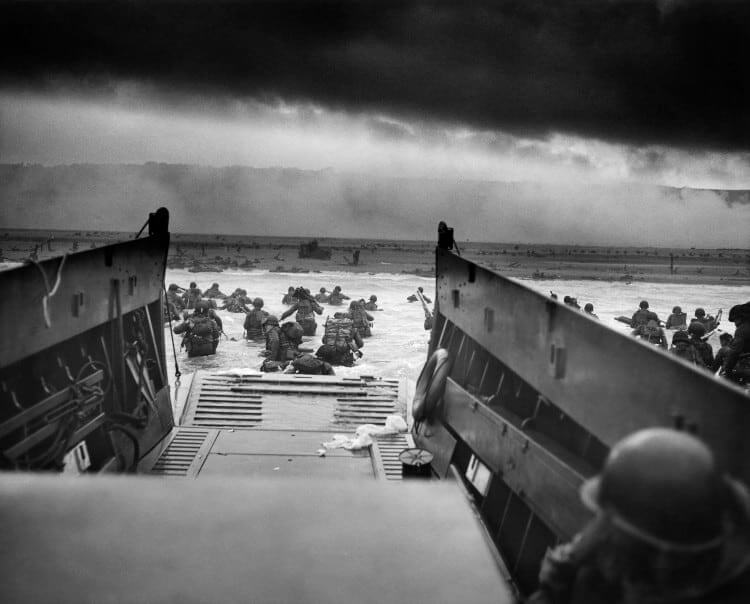
Allied soldiers, soaked by cold seawater, charged head-long into barbed wire, land mines, and Czech Hedgehog tripods, all below Nazi bunkers and machinegun nests on the cliffs above. Under a constant hail of gunfire, many of Neptune's troops were cut to ribbons before even setting foot on dry land. While Axis forces suffered an equal number of casualties, neither side expected to have so much difficulty in the ensuing battles. The beaches and nearby towns were critical to the expulsion of Nazi powers from France, and although the territory was eventually taken by the Allies, they paid dearly for every inch.
18. The Cleaning of Venice's Canals, 1956
The canals of Venice are world-renowned both for their iconic appearance and for their use in public transportation, including gondolas, water-buses, and boat-taxis. For locals though, they're also notoriously filthy -- at times containing as little as 30cm of water over almost two meters of mud and debris. Cleaning operations are costly and difficult, but sometimes absolutely necessary.
The instance in this 1956 photo depicts what was the canals' most thorough cleaning to date, but maintenance only treats a symptom of what is fundamentally a logistical nightmare. Swimming in the canals is also prohibited, though it's unclear whether that's to protect people from infection and disease or from the array of jagged, rusty scooters undoubtedly resting just below the surface.
19. The Schwerer Gustav Railway "Gun," c. 1941
The "Heavy Gustaf" was a massive German railway artillery cannon developed in the late 1930s and was capable of launching 4.7-tonne explosive shells and 7-tonne concrete piercing slugs which could penetrate more than 30 meters into the earth. It remains the largest "gun" ever built and was created with the express purpose of destroying the French forts of the Maginot Line -- a defensive grouping that consisted of the strongest fortifications on Earth at that time.
The 1,350-tonne monster fired massive shells from its 80cm (31.5in) cannon, capable of traveling distances of 47km (29mi). Although it was created for use in the Battle of France, it was not yet ready when the battle began. However, it proved unnecessary as the Blitzkrieg offensive via Belgium overcame the Maginot Line with shocking ease. Instead, Gustav was first deployed against the USSR in the Battle of Sevastopol. The weapon was later moved to Leningrad, but again the conflict was over before its preparations were complete. The Schwerer Gustav was eventually destroyed by Nazi command in 1945 to avoid its capture by the Red Army.
20. The World's First Underwater Nuclear Detonation, 1946
In the year following the deployment of the atomic bombs in Hiroshima and Nagasaki, the United States was in full swing testing nuclear weaponry in the Pacific Ocean under Operation Crossroads. Tests were specifically conducted in the Marshall Islands, including Bikini Atoll, where the Baker bomb became the first nuclear weapon to be detonated underwater -- producing some incredible imagery.
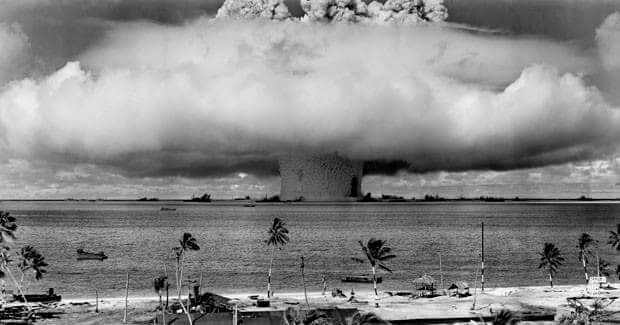
Due to the number and magnitude of nuclear tests in the area, even after 60 years Bikini Atoll and several other Marshall Islands remain more heavily irradiated than Fukushima and even Chernobyl. Researchers took a number of plutonium soil tests in the area and found that certain islands had levels up to 1,000 times higher than samples from Fukushima, and up to 10 times higher than those from the Exclusion Zone in Chernobyl.
21. The Japanese Samurai Before its Abolition, 1860
Equivalent to something between Europe's knights and nobles, the Samurai were Japan's warrior-aristocrats. They lived by a special set of rules and laws (exceptions and privileges would be more accurate), and although their caste was eventually abolished in the mid-1800s under a reformist administration, pop culture has romanticized the Samurai to a nearly unrecognizable point. Renowned today for boundless honor, loyalty, and skill with their razor-sharp katanas, actual Samurai did not much resemble the modern concept.
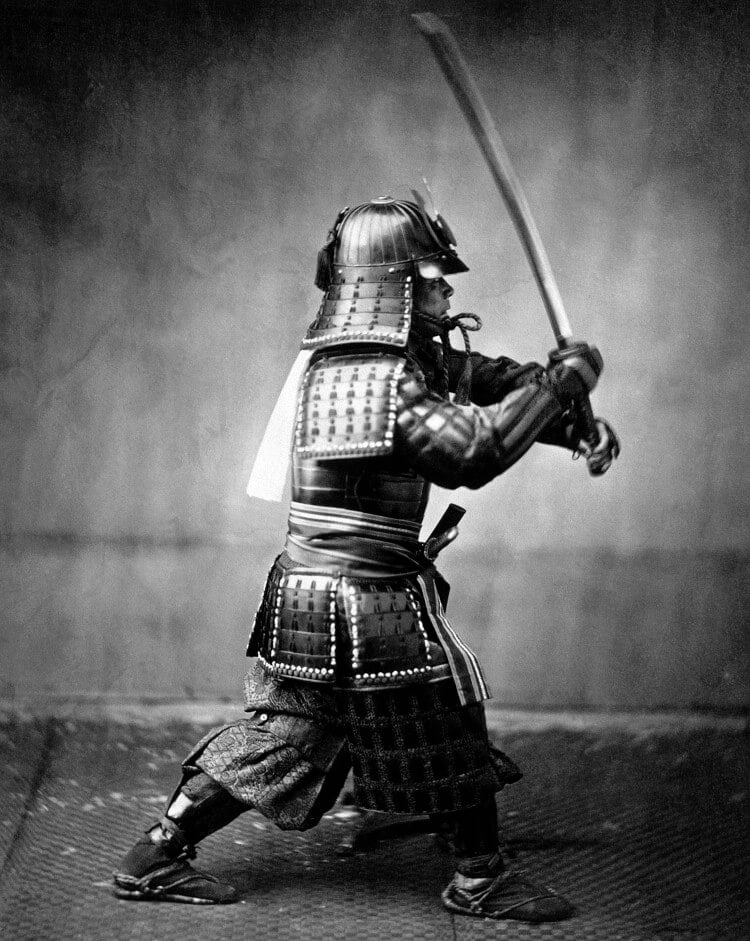
Not only did Samurai not use their swords in battle, but many actually attempted to downplay their skill with blades. This was because, in reality, Samurai were exclusively horseback archers -- a Samurai who needed to use his sword was not considered particularly worthy of respect. Samurai were also not especially known for their loyalty or honor. They were, in essence, upper-class mercenaries, and it was not uncommon for Samurai to accept advance soldiery payment from a lord and then vanish into the hills. They did, however, engage in some wholesome Samurai-specific activities such as: murdering innocent peasants along the road for entertainment, simultaneously impaling as many unarmed prisoners as possible with ōdachi katanas; and friendly competitions which involved chasing dogs on horseback and shooting them with arrows.
22. Unit 731, "The Lumber Mill," Imperial Japan's Secret Atrocity
Unit 731, also referred to as the "Lumber Mill" was a covert Japanese biological weapons testing facility active during WWII. It was known to have committed the most horrific human experimentation throughout the entirety of the war, and perhaps in human history. Its sickening lethal testing ran from approximately 1931 until Japan's surrender to Allied powers in 1945, after Hiroshima and Nagasaki were devastated by the two atomic bombs dropped by the United States.
Responsible for the deaths of almost four times more people than the number who died in the atomic bombings, Unit 731's WMD research comprised both biological and chemical weapons testing, in addition to others. Human experimentation included shrapnel fragmentation, vivisection, infection tests, rape, and exposure of patients including pregnant women to bubonic plague and anthrax. Victims consisted of Allied POWs, Jews, and Chinese civilians. No forms of anesthesia were ever used.
23. Cher Ami, the Homing Pigeon who Saved the "Lost Batallion," c. 1919
By the second day of the Battle of Argonne, the largest American conflict during World War 1, allied soldiers had lost half their forces, been isolated and surrounded by Germans, and were also being inadvertently shelled by their own artillery support. Facing imminent destruction, they released two messenger pigeons to halt the shelling. Sadly, both were shot and killed by German troops. Enter Cher Ami, the company's last remaining homing pigeon and last remaining hope of rescue.
Suffering extreme casualties and without supplies or ammunition, everything rested on Cher Ami. She took off, flying over the battlefields, but was also shot down by German forces and fell to the ground. Yet, miraculously, she was able to take off again. Despite being critically wounded by the bullet in her chest, losing her leg, and being blinded in one eye, she completed the 25-mile flight to the Allied HQ. She arrived soaked in blood and hopping on one leg, but saved the lives of those 194 desperate American soldiers. Cher Ami not only survived the ordeal with help from HQ medics, but she became an American war hero, earned a gold medal and made headlines in various newspapers across the nation. In November 2019, she was posthumously awarded the Animals in War & Peace Medal of Bravery.
24. Photo from the Torch of the Statue of Liberty, 1930
The Statue of Liberty is globally recognized, though not everyone knows that it was originally a gift to the United States from France, in honor of the alliance between the United States and France during the American Revolution. Portraying the Roman goddess Libertas, the statue represents the struggle for liberty against the British Empire by both the American colonies and France herself.
Her framework was designed by the famed Gustave Eiffel, and her copper body was designed by Frédéric Bartholdi. In one hand, Lady Liberty wields a torch that represents the illumination of the path to freedom. In the other, she holds her tabula ansata, inscribed with the Roman numerals for July 4th, 1776 -- the year the US Declaration of Independence was signed.
25. The Back of the Hoover Dam Before Operation, 1936
Located on the border of Nevada and Arizona, the Hoover Dam stands in the Black Canyon of the Colorado River. Since the beginning of the 1900s, Black Canyon had been considered for the construction of a multifunctional dam. Work began in 1931 by Six Companies Inc., and despite difficulties due to the area's climate and total isolation, the dam was actually completed more than 2 years ahead of schedule.
Surprisingly, this impressive feat of engineering was undertaken during the thick of the Great Depression. An enormous effort began, involving thousands of skilled workers who labored tirelessly to erect the dam as quickly as possible. Tragically, more than one hundred fell to their deaths during its construction. Originally called the Boulder Dam, it was renamed in honor of President Hoover by Congress in 1947.
26. Bird's Eye View of the Woodstock Music Festival, 1969
Advertised as 3 Days of Peace & Music, "Woodstock" was a 4-day music festival held on a dairy farm in Bethel, New York from August 15th to 18th in 1969. Over 400,000 people attended the event which comprised thirty-two open-air performances, despite intermittent rain.
Among the performers were names such as Santana, Creedence Clearwater Revival, Janis Joplin, The Who, Jefferson Airplane, and Jimi Hendrix. The impressive list of acts brought an enormous number of attendees from around the nation, causing massive traffic jams across rural Bethel county and becoming one of the definitive moments in Rock and Roll history.
27. 1942 Lockheed P-38 "Lightning" Emerges from the Welsh Coastline After 65 Years, 2007
Perhaps the P-38 was called "Lightning" instead of "Thunder" because it was an unusually quiet aircraft. Highly versatile, these fighters were used for a variety of missions throughout WWII -- including interception, bombing, ground attack, reconnaissance, long-range fighter escort, and pathfinding. Primarily used in the Pacific Theater, the P-38 was known to be highly forgiving and was in large-scale production throughout US military involvement in WWII.
This particular fighter, called the Maid of Harlech, had originally crashed during a training exercise when it suffered engine failure. Although the plane vanished beneath the sands, the pilot, Lt. Robert Elliott, survived the wreck. Unfortunately, like his plane, he also vanished only 3 months later while deployed in Tunisia for WWII's African Theatre. But unlike his plane, he didn't resurface.
28. Manhattan's New Telephone Line Network, 1887
The Telephone Company of New York was formed in 1876 with the purpose of renting certain telephone equipment to clients, who were also required to provide the cable connections. The first telephone was installed circa 1878, and with 7-8 years, Manhattan was covered with the rat's nest equivalent of wires.
Although highly inefficient and precarious by today's standards, it was considered to be by far the best option at the time. That is until 2-3 years later, in 1888, when a heavy snowstorm devastated the enormous mess of cables, giving city engineers the idea that burying them underground would probably be better than haphazardly threading them around every structure in the city.
29. The Golden Gate Bridge Nears Completion, 1935
Because San Francisco had always been bound by plenty of water, bridges had been proposed as early as the 1800s but the idea had always been dismissed as impossible. In 1919, however, Engineer Joseph Baermann Strauss disagreed, claiming he could indeed build such a bridge -- although due to excessive bureaucracy, it took almost 20 years to do so.
Actual construction did not even begin until 1933 -- but just three short years later, both sides of the massive bridge had joined together in the center, making it the longest suspension span ever created until that point, at 4,200 feet or 1,280 meters. On May 27th, 1937, the Golden Gate Bridge opened to the public, with almost 180,000 people crossing on foot that day. Eleven men died during the bridge's construction, and are memorialized by a plaque near the beginning of the bridge.
30. American Troops Returning on V-Day Aboard the RMS Queen Elizabeth, 1945
Both the RMS Queen Elizabeth and the RMS Queen Mary were used extensively during WWII to deploy US soldiers to Europe. Returning to New York, her voyage from the British Isles took between five and seven days. The Queen Mary and Queen Elizabeth were used specifically for their evasive abilities, which allowed them to avoid or escape German U-boats. The Queen Elizabeth could carry over 15,000 troops and had over 900 crew members.
Unfortunately, in 1972, the Queen Elizabeth caught fire and sank in Victoria Harbor, Hong Kong, but her sister ship, the Queen Mary, survives to this day and is permanently moored in Long Beach, CA. It serves as a tourist attraction, museum, event venue, and allegedly haunted hotel -- perhaps for an event in 1942, in which the Queen Mary accidentally cut straight through the HMS Curacoa off the coast of Ireland, resulting in the deaths of 239 servicemen.
31. The Hexagon Hotel, c. 1900
Located in Mineral Wells, Texas, the Hexagon hotel held pretty true to its name, which, as implied, was a hexagon-shaped hotel. David G. Galbraith, future-inventor of the paperclip, both designed and constructed it with a specific purpose. In an era before air conditioning, the unique shape helped to achieve maximum air circulation -- something much appreciated during Texas summers. It was also the first hotel in the area with that newfangled e-lec-tricity.
After Galbraith's death, his widow lived in the old hotel until the age of 88, when she passed away as well. The Galbraiths' daughters, on the other hand, didn't seem to view their father's unique hotel as anything meriting historical preservation, but rather as something that could be scrapped for quick cash. In September of 1959, they hired a demolition contractor who tore down the Hexagon Hotel in just a few short weeks.
32. The Old Main Library, Cincinnati, c. 1955
Built in 1874, the "Old Main" Library in Cincinnati, Ohio, was considered to be the most elegant and impressive library in the United States during its early years. It boasted five levels of bookshelves covering every wall, marble floors, and an enormous skylight above, providing abundant lighting throughout the building.
It was originally intended to be an opera, and had a construction cost to the tune of almost $8,000,000USD (adjusted) and contained over 60,000 books packed among its castiron alcoves and spiral staircases. However, despite its grandeur, it was an aging building and a newer, larger library had been planned for more than 30 years. Sadly, the Old Main did not have the esteem and admiration its memory has today -- in June of 1955, after 3 full weeks of book removal, the Old Main Library was demolished.
33. The Seal of Tutankhamun's Tomb, Unbroken for 3,245 Years, 1922
As perhaps the most famous archaeological discovery in history, most people have heard of King Tut, his tomb, and the myth of the "Curse of the Pharoahs." However, it is only due to ancient Egypt's attempts to erase young Tutankhamun from history that his tomb survived and evaded thieves for so long.
Tut's father, Akhenaten, had attempted to forcefully implement a monotheistic sun-worship religion -- an unpopular move which was completely dismantled after his death. Tutankhamun, a remnant of his father's reign, died under mysterious circumstances at approximately 15 years old. After his burial, the kingdom did its best to expunge all records of Tut and his father from Egypt's history, which, ironically, protected his tomb from thieves and left its eventual discovery to immortalize him as the most famous Pharoah of all time.
34. Alma College, Age 130, One Year Before Inferno, 2007
Built 1878, Alma College was a private girls' school located in St. Thomas, Ontario. It was in operation from 1881 until 1988, when it was closed, primarily due to a teacher's strike. Aside from the main building, the college offered students its own gymnasium, chapel, and a unique stone amphitheater built into the nearby ravine. It was designated a historical site in 1976.
In the years following its closure, the enormous, hundred-year-old brick and wood building fell into greater and greater disrepair. After several failed attempts to convert or renovate the building, talk began of demolition, though requests were denied by the municipality. Eventually, the building's interior was emptied, leaving only an eerie shell which was used to great effect in the 2005 movie Silent Hill. Unfortunately, Alma College had been essentially a tinderbox for years, and in May 2008, several local teens inadvertently set the main building on fire, which quickly became an inferno that utterly destroyed it.
35. The Second Photo of Billy the Kid, 1877
Henry McCarty, better known as Billy the Kid, was an outlaw, bandit, gunfighter, and remains among the most famous figures from the "Wild West" era. Despite his notoriety, very few photos of him exist, as he died in 1881, long before cameras were in general use. For many years there was only one known photo of the Kid. That is until relatively recently when a second photo surfaced in Fresno, California.
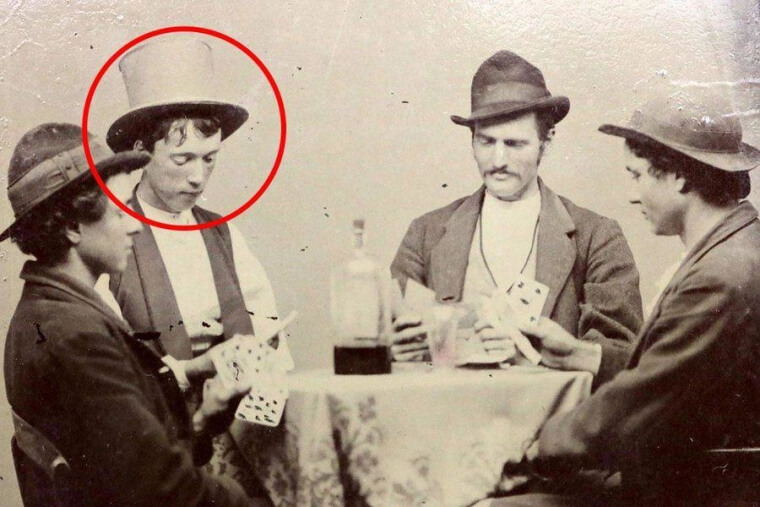
The 4x6-inch ferrotype appears to depict Billy the Kid with his outlaw gang, the Lincoln County Regulators, in a game of croquet. McCarty's life of crime began in New Mexico when he murdered Lincoln County Sherriff William Brady, whom he suspected had killed his employer. After going on the run, he accrued a list of additional crimes including horse theft, cattle rustling, several more murders, and finally a jailbreak in which he killed both guards on duty. The Kid's streak came to an end just two months later when lawman Pat Garrett tracked him to a ranch house, surprised him in a dark room, and shot him stone-cold dead.
36. Young Judy Garland Poses in Test Shoot for the Role of Dorothy, 1939
While The Wizard of Oz is no longer watched by anyone sober, it was absolutely revolutionary in its day. The starring role of Dorothy was played by 17-year-old Frances Ethel Gumm, better known by her stage name, Judy Garland. A Grammy-award winner, she is considered to be one of the greatest film stars of all-time in addition to being an incredible singer. While the role thrust her into international stardom, her success did not come easily.
Garland was originally signed by MGM at the age of 13 after an audition left the studio's co-founder stunned, and he signed her without any further screening. Unfortunately, Judy Garland soon realized she wasn't in Kansas anymore. Treated very poorly by the studio, she was pushed onto a strict starvation diet, forced to work up to 18 hours per day, and given constant doses of amphetamines to which she developed the lifelong addiction that killed her at the age of 47.
"Those who cannot remember the past are condemned to repeat it." - George Santayana.


